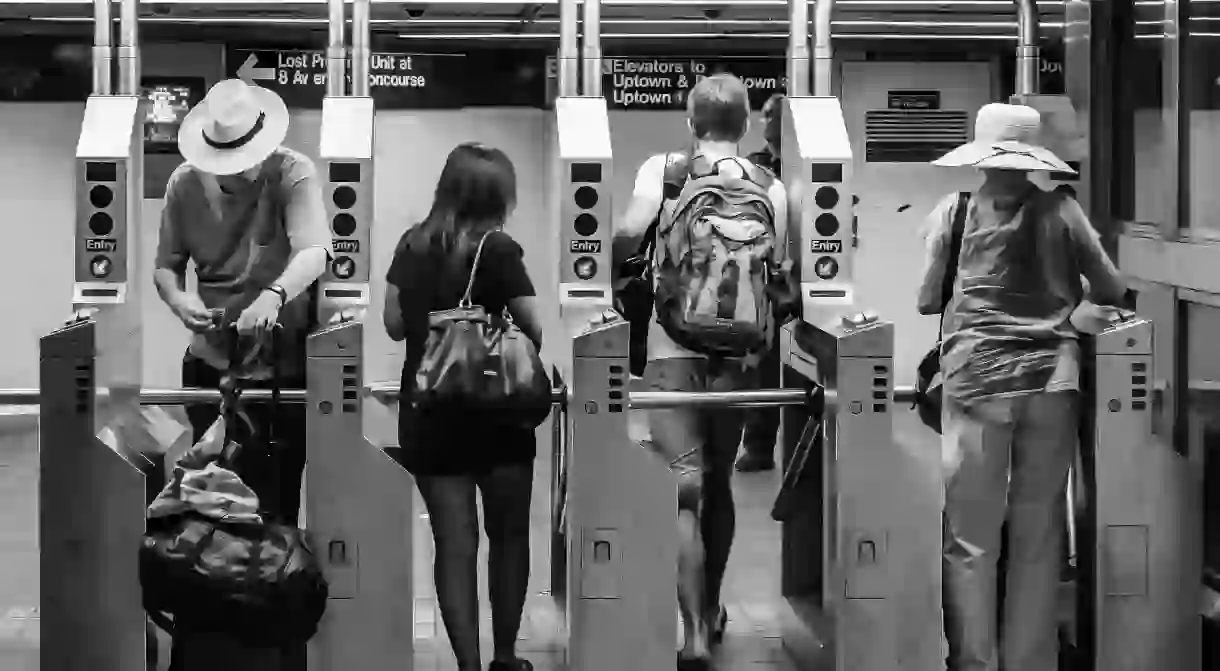Should New York City Shut Down Its 24-Hour Subway?

Whether it’s delayed trains, signal malfunctions, track fires or the horrific stalling of the F train in June 2017, the Metropolitan Transit Authority (MTA) is scrambling to fix the myriad issues now facing its commuters. In an effort to repair the subway, a proposed idea to shut down the city’s 24-hour service has hit a nerve with New Yorkers, leaving everyone questioning whether the city that never sleeps should have a subway that does.
Monday morning in New York City and the platforms at Union Square runneth over with angry city slickers desperate to get to work by 9 a.m. Each train that pulls into the station is overflowing with commuters—packed like sardines in a can—as those waiting on the platform look on helplessly, unable to squeeze even a foot through the door.
Eye rolls quickly escalate to under-the-breath insults until that notorious New York sass is being thrown around shamelessly. One train passes, then two as the overheard train schedule reads simply: “Delayed.”
Welcome to New York’s subway system, a rapidly failing and flailing transportation network that is the bane of every New Yorker’s existence.

Since 2012, the number of train delays in New York City have jumped from 28,000 to 70,000 per month, according to Business Insider. While the MTA desperately tries to gussy up the subway stations by installing touchscreen kiosks, USB ports and WiFi, cosmetic repairs hardly negate the fact that New York runs on technology that predates World War II.
Like trying to slap a Band-Aid over a bullet wound, the MTA’s current efforts to remedy N’s growing subway problem continue to fall short. After all, when millions of people rely daily on century-old technology, it’s no wonder that we now find ourselves in the situation we’re in. In response, the Regional Plan Association has suggested the rather radical idea of ending the city’s 24/7 subway service on weekdays to allow for overnight track repair.
The proposal to shut down New York’s nightly subway service has ruffled the feathers of many, to say the least. “The city is becoming more of a 24-hour city than it’s ever been,” Mitchell Moss, the director of the Rudin Center for Transportation Policy and Management at New York University, told The New York Times. “Closing the subways is a way to undermine the health care industry, the restaurant industry, the office maintenance industry. This is a threat to the fundamentals of the city’s economy.”

Moss’ feelings are valid in that an estimated 85,000 New Yorkers ride the subway between the hours of 12:30 a.m. to 5 a.m., reports amNY. Beyond the massive inconvenience a nightly shutdown would mean for the city, there is also the question of New York pride.
Andrew Sparberg, a subway historian told The New York Times that New York City’s subways have run 24 hours since the day they opened in 1904. Not even during World War II did the city’s subway shut down; the decision—said Sparberg—would be “unprecedented.” New York’s reputation as being a “city that never sleeps”—one which separates it from the likes of Paris and Tokyo—has become such an identifier that many feel a subway shutdown is an extreme solution.
“I’m a New Yorker—24-hour subway service is part of our birthright,” New York Mayor Bill de Blasio told the NY Daily News. “This is not Washington, D.C., with all due respect to Washington, D.C. You cannot shut down the subway at night. This is a 24-hour city.”

Sentiments aside, a drastic solution to the New York subway problem is needed. After all, a temporary subway-wide shutdown may just be the ticket to a long-term solution of improved commutes for all New Yorkers. New York’s reputation of being a sleepless city isn’t entirely predicated on our subways, but rather on the energy of a city that is constantly teeming with life.
Regardless of outrage, the MTA has already begun moving forward with shutting down stations overnight—and in some cases, like the Queens 36th and 30th Avenue stations, for months—in an effort to rapidly repair the increasingly aging tracks.
Ultimately, New Yorkers will have to decide which is more important: a convenient late-night ride or a calm Monday morning commute.













